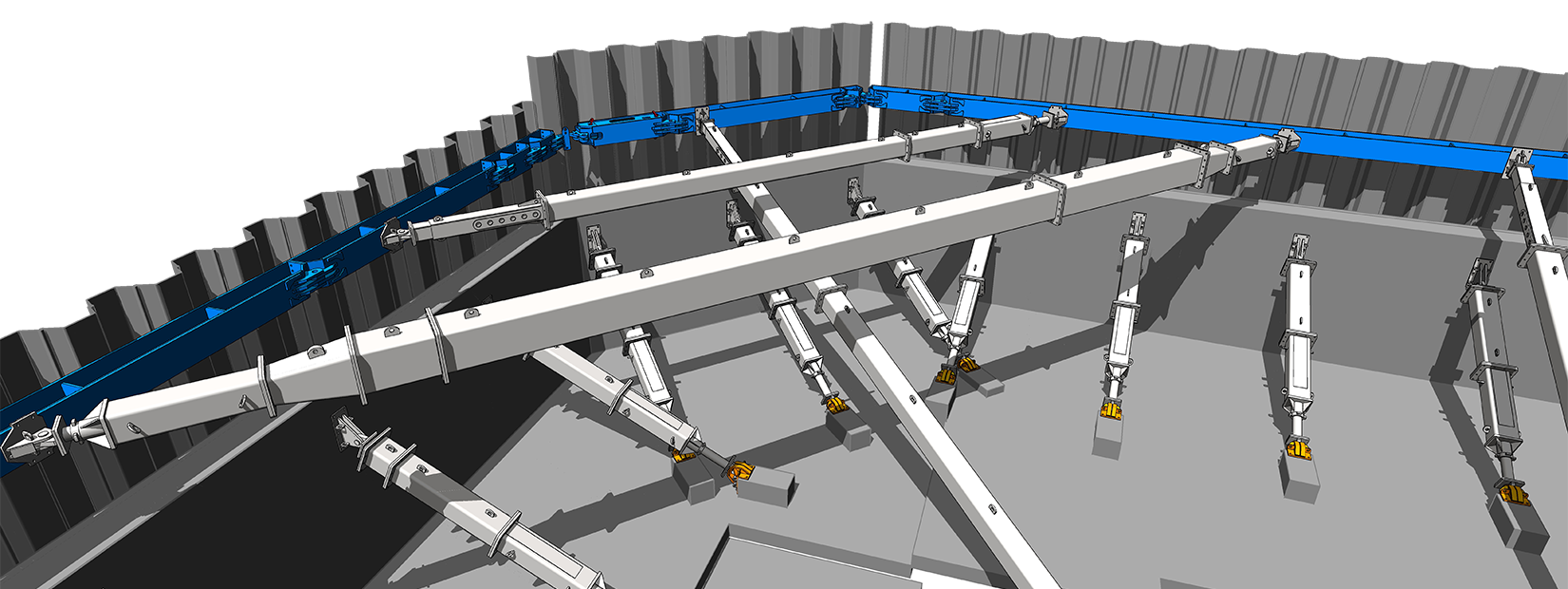Historically, digitisation and the use of BIM have primarily been considered for the permanent works design. But as temporary works are the backbone of construction schemes – required on a project either before the permanent works begin, or as a means of assisting and facilitating the construction process – it makes sense to consider both at the early stages.
Temporary works are often incorporated on large construction, infrastructure and commercial developments at the later stages of a project, when the 3D model of the proposed structure is already well-developed, or even completed. This has the potential to cause considerable issues for all parties and more vitally, cause disruption and effect efficiencies to the project as a whole.
Whether your project will require groundworks or formwork, temporary access or propping and jacking, if the early 3D model does not take into consideration temporary works, then the detailed model will often have to be stripped back for them to be correctly designed and incorporated. Not only can this be a time-consuming process, but involvement this late on also makes it difficult to visualise how the temporary works will fit into the overall building design and construction sequence, as the superstructure has already been modelled.
Early contractor involvement
We highly recommend bringing temporary works in as early as possible in the Plan of Works (PoW). Visualising temporary works at the early stages of the construction sequence can make a huge difference. It can help to achieve a better-informed overall design and improve confidence and certainty in highly complex design programmes.
What’s more, it can also provide a much better understanding of any potential challenges, enabling project teams to take a proactive approach to solving them, as opposed to being forced to react as and when they occur later on site.
Some may say that 3D models act as a ‘digital rehearsal’ of the temporary works, which makes complete sense, as essentially every component can be fully considered, designed and analysed to ensure its constructability. They can also maximise the efficiency of the overall design, prior to the commencement of any work on site. And from a health and safety perspective, a clear visualisation of the proposed temporary works early on will allow contractors to identify and mitigate any potential site safety risks. For installation teams, they can take a virtual walk-through of the site prior to construction commencing, to become familiar with the works and conditions.
Collaborating with a temporary works specialist
To help you get it right, temporary works specialists are experts in the field and a source of innovative engineering, helping deliver results quickly and safely while unlocking huge efficiencies in the overall project. By working closely with a temporary works specialist early on, evaluation of the temporary works requirements for the project can take place, informed guidance and advice can be given and contractors and clients can benefit from lower costs. This, in turn, leads to reduced risks and faster implementation, with less disruption and increased efficiency.
Our experience at Mabey Hire means that we can offer a full expert design service where our team of engineers work with you to understand your challenges and design the right solutions at the critical early stage of the project.
